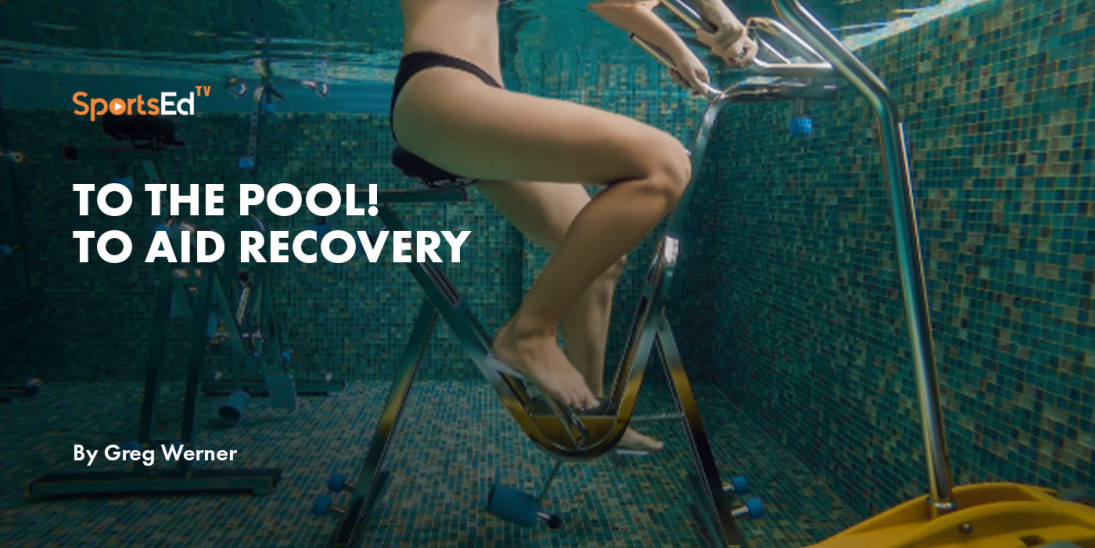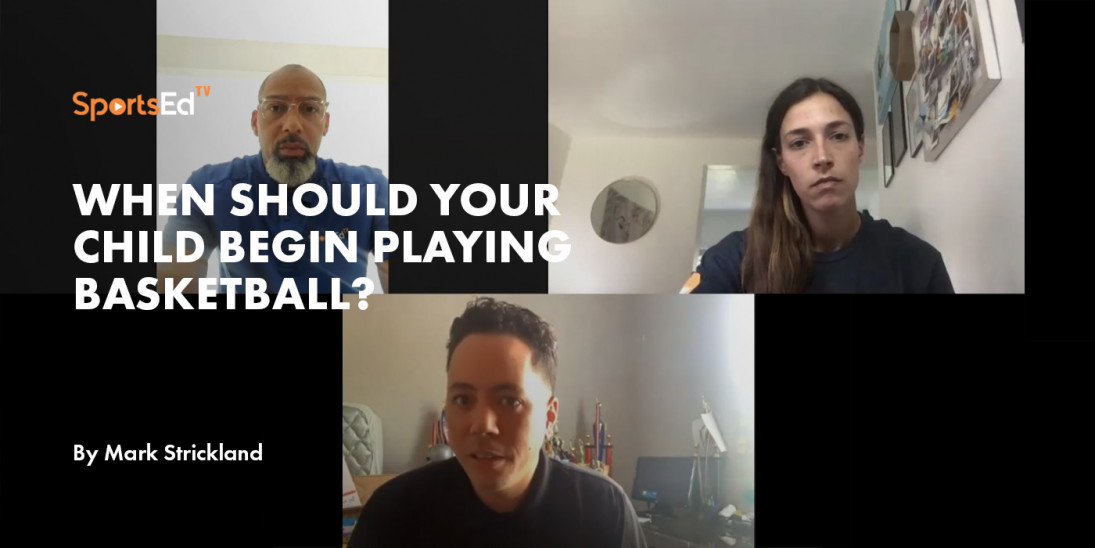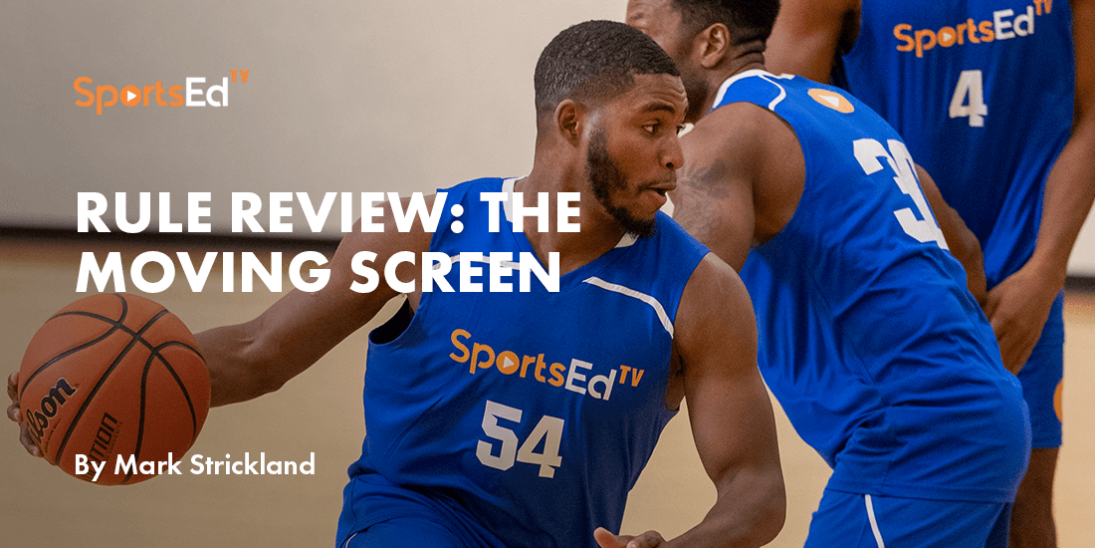Basketball
Welcome and thanks for visiting...

To The Pool! To Aid Recovery

By Greg Werner, MS, MSCC, RSCC*E, Head Strength & Conditioning Coach, Virginia Tech Women’s Basketball
To become the best athlete possible, you must train hard and push your body to new levels of development. For you to optimally sustain steady progress from your training efforts you must plan weekly blocks of time for dedicated active recovery sessions. Recovery sessions utilize the full range of motion, dynamic movements to increase circulation, pushing nutrient rich blood into the muscles and flushing out any byproducts left from your hard training.
Think about it from a breaking down-and-rebuilding perspective. If you were to construct a building the way the human body’s training overload and adaptation processes work, you would need to employ three crews to increase the speed and efficiency of the processes: a demolition crew, a clean-up crew, and a building/rebuilding crew.
When you’re training hard, you first utilize the demolition crew within certain volumes and intensities (overload), and then the clean-up crew comes in to haul out the damage and waste you created, and almost simultaneously, the building/rebuilding crew goes to work in building your structure back up to a new stronger level of development (adaptation). So, if you expect to push hard and overload your performance systems – which creates damage and a buildup of waste byproducts – you optimally need to utilize recovery sessions to aid in the flush-out and building/rebuilding processes.
The research is growing on effective and efficient methods to aid in the recovery of trained body systems (structural, chemical and mental). Pools are excellent environments in which to conduct recovery sessions the day after hard training or games, it’s technical name is hydrotherapy. Both active and passive recovery techniques can be used depending on the temperature of the water in the pool. Warm pools such as hot tubs, are ideal for static stretching and very light active movements. Cold pools using water that’s around 59°F (15°C) are useful for passively sitting. Although researchers are debating the details, studies indicate that athletes who soak in cold water for short periods after exercise have less muscle soreness later on. Cool water swimming pools, the ocean or a lake are best for more active movements interspersed with some stretching. Below I will discuss using a cool water swimming pool for recovery purposes.
A 2010 study published in the International Journal of Sports Medicine, looked at the performance of nine high-level triathletes. The athletes performed an interval run training session comprised of 8 x 3-minute runs at 85-90 percent of VO2 peak velocity on two separate occasions. Ten hours after the runs, they either swam 2,000 meters (active recovery) or laid down (passive recovery) for an equal amount of time. Fourteen hours after that, the subjects performed a high-intensity run to fatigue to assess how well their running performance had recovered from the previous day’s interval sessions.
The results showed the athletes had a 14 percent improvement in their run time to fatigue after the active recovery swimming compared to the passive rest (13:50 versus 12:08). In addition, the active recovery swimming resulted in a decrease in the levels of c-reactive protein, a biomarker for inflammation. These results suggest that active recovery swimming enhanced subsequent run performance by abating tissue inflammation caused by initial exertion, as well as benefiting from the hydrostatic massaging properties of water.
It is apparent to conclude that using swimming (or active movements in slightly warm to cool water) as an active recovery method is the way to go for swimmers, triathletes, and runners based on the study mentioned. But could swimming pool recovery work also be applied to other field and court running sports? Since active recovery swimming is a proven method for improved running performance due to attenuation of tissue inflammation, it is only logical that recovery swimming and/or treading water could universally apply to any sport that causes tissue damage and inflammation upon exertion.
Water provides buoyancy and light resistance properties which allow you to undertake gentle exercise with minimum impact on your body. Immersing your body in slightly warm to cool water following hard exercise minimizes training induced edema and some of the ensuing residual tension, as a result of the hydrostatic pressure and cool temperatures experienced by the immersed body parts. Part of what makes pool recovery sessions so effective is they allow you to go through multi-joint, full range of motion movements without any of the pounding and impact inherent in training on the court and in the weight room.
Chip Smith, founder of Chip Smith Performance Systems, has successfully integrated a weekly pool recovery day into his training of 1,000’s of pro athletes for more than 25 years. Similarly, I have used recovery cool water workouts with great success in training multiple sports (football, basketball, soccer, field hockey) the day after a game or a hard workout.
The water depth should be comfortable to you. If you’re comfortable with swimming you’re good to go in deeper water; if you’re a non-swimmer you should stay in water no deeper than shoulder depth so you can always touch the pool floor and keep your head above the water.
One of the best parts about a pool recovery session is that the benefits can be gained from a short series of simple dynamic movements. Try this quick routine the next time you hit the pool to boost your recovery and enhance your performance. If a cannonball splash contest breaks out that’s good too, have fun with it.
- Easy swim with whatever stroke you feel comfortable with for 5 minutes (non-swimmers use float boards and/or float belts).
- Jog forward (laps in water at chest to shoulder depth) 3 minutes.
- Jog backward 2 minutes.
- Shuffle laterally 2 minutes.
- Repeat No. 1 for 2 minutes.
- Multiple stretches in the water 3 minutes.
- Water treading using arms and legs wearing an aqua jog belt or holding float boards, 1 minute of work followed by 30 seconds of rest (hold poolside during rest if needed) for each:
- Running motion — 1 minute.
- Scissor kicks — 1 minute.
- Split kicks — 1 minute.
- Running motion — 1 minute.
- Running in circles clockwise — 1 minute.
- Running in circles counterclockwise — 1 minute.
A recovery session in the pool helps you mentally and physically relax and unwind during a period of heavy training or competition. Besides a structured routine like I’ve explained above, playing a childhood pool game like Tag, Pool Volleyball or Marco Polo allows you to have fun and blow off some stress while unknowingly creating a recovery environment. Jump in the water it feels great!
Int J Sports Med. 2010 Jan;31(1):26-30. doi: 10.1055/s-0029-1239498. Epub 2009 Nov 11. Effects of a recovery swim on subsequent running performance. Lum D, Landers G, Peeling P.




